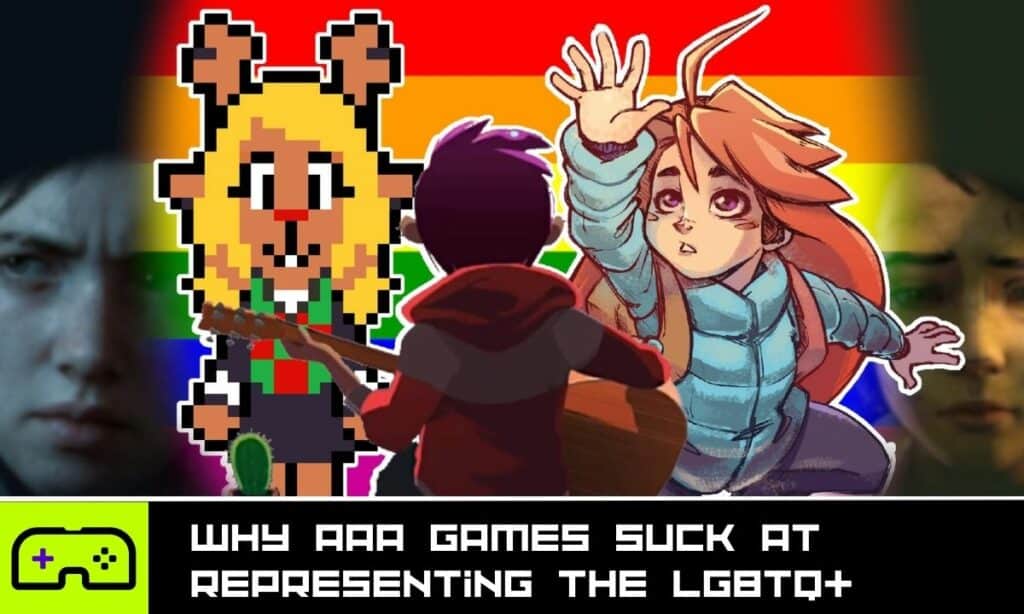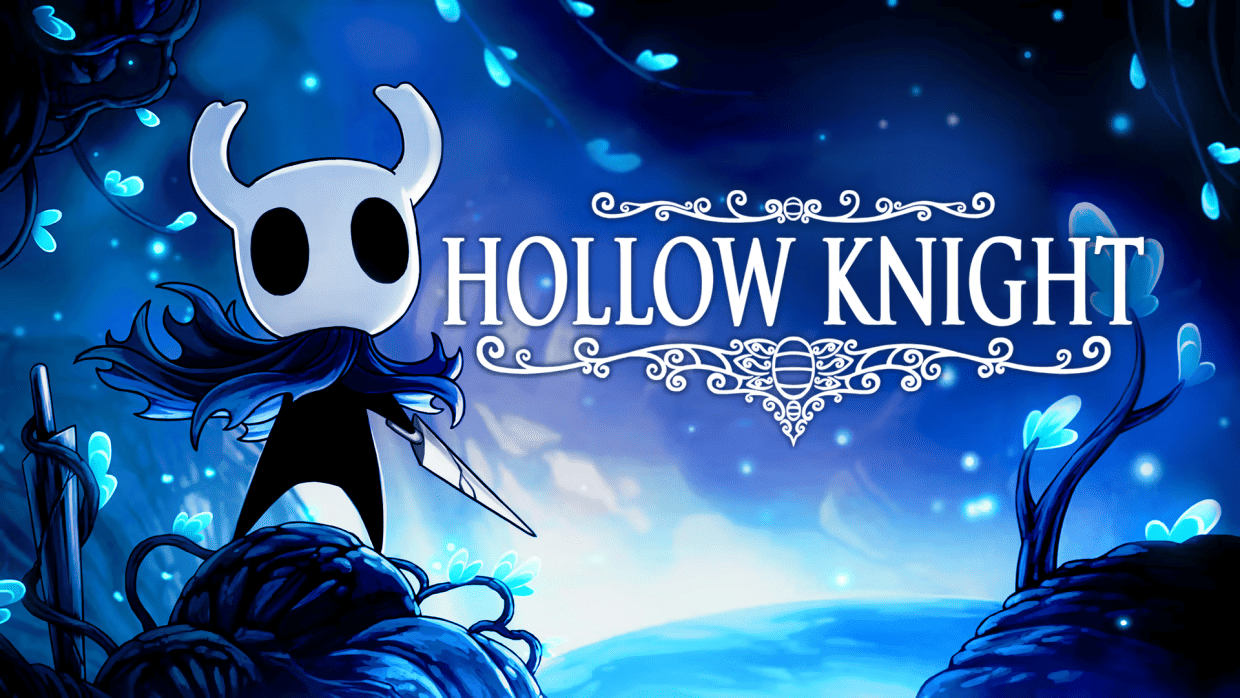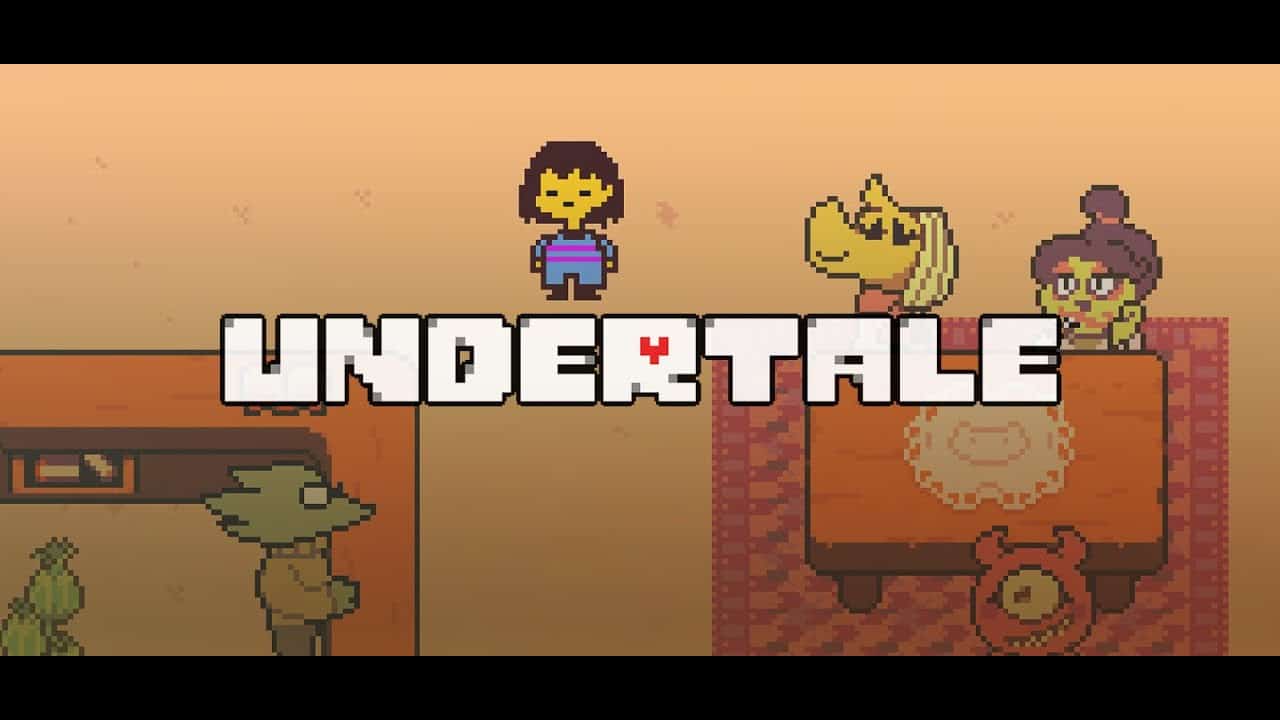Big corporations focus on many things with their games. One of the biggest pushes recently is making characters represent minorities, which sounds good in concept but can often be executed poorly. Triple-A games have constantly made the worst LGBTQ+ characters, with indie games trouncing them in every single way, and I’m tired of pretending that I care when Sony says they’re representing me.
Immerse yourself in the hauntingly beautiful world of "Hollow Knight," where every step unveils secrets and challenges waiting to be conquered. With its captivating art style and intricate gameplay, embark on an epic journey filled with mystery, danger, and discovery unlike any other.
There’s a stark difference between any representation and good representation, and representing people with complex and intricate reasons for being who and what they are in the way that Triple-A’s have done it has made me pretty upset the last few years. I think it’s high time we dissect why these big companies are terrible at this and show off indies that do it so much better.
Who Am I to Say This?

Alright, I’ve made some bold claims already and will continue making them, so first, I should probably state my Gay Credentials™. I’ve had gender dysphoria and no real preference in what gender I’m attracted to since I was around 8, but I only realized I was transgender and pansexual around when I was 14 or 15. I’ve had a ton of experiences both in my gender exploration and in the partners I’ve had that have made me who I am today, which is confidently fruity.
One of the biggest reasons why it took me so long to figure out who I was (despite being the textbook definition of these two things, which is rare) is that I didn’t grow up in an environment that fostered or encouraged that kind of exploration, so one of the only places I could find that reassured me that what I felt was normal or valid were video games. Playing Undertale when I was 12 or 13 kind of just lit a fire in me and helped me discover these parts of myself.
So, I’m someone who’s become incredibly linked with both my sexual and gender identity and has had video games be an integral part of discovering that. Seeing LGBTQ+ representation be done so right in a game helped me the most in figuring myself out and seeing things from a different perspective than what my parents wanted me to, so this kind of thing is incredibly important to me.
Embark on an unforgettable journey through the underground world of Undertale, where every choice you make shapes the fate of monsters and humans alike. With its charming retro graphics and innovative gameplay mechanics, immerse yourself in a tale of friendship, determination, and the power of mercy.
Corporations Are Bad At This

This importance to me is why it makes me so genuinely upset to see so many media releases nowadays have underwhelming gay characters who often show up for a scene or two to state that they are indeed gay, and then never stick around to serve as an essential part of the story or have their sexuality explored in any meaningful way. It’s perhaps a little better than creators claiming their long-established characters were gay all along, but not much.
It’s not all bad, at least in media and high-production art as a whole. For example, I like Will in Invincible because he is just as important as every other side character in the show, with his sexuality coming into play in the story without feeling forced. I like Scott Pilgrim’s Wallace for being incredibly entertaining and shown as one of the most competent, level-headed characters, with more rizz than one would think was possible. But this, rarely ever translates to AAA gaming.
High-production Triple-A video games as a whole have never once provided a prominent queer character I felt satisfied with or represented by. In The Last Of Us, it feels like Ellie’s sexuality gets randomly hammered in and feels tonally unfitting. Clementine’s Bisexuality in The Walking Dead comes out of nowhere and barely changes anything in the story anyway. Overwatch’s gay characters all feel shoehorned in for marketing, and Persona 5 has the worst of it, with every bit of representation being made the butt of a joke.

Yet, despite these poor examples, Nintendo is probably the worst at this. Given they, more than anyone else, want their games to appeal to absolutely everyone, this means either not confirming queer characters or relegating them to less popular series like Fire Emblem and Xenoblade. In these games, you either have three bisexual characters whose sexuality has nothing to do with the story or a character strolling toward the camera to explain why someone uses they/them pronouns, which is unintentionally hilarious but not good.
I think the best LGBTQ+ rep I’ve seen in a triple-A title has weirdly been in Forza Horizon 5, where you get to choose your pronouns and name and have them said verbally by the in-game narrators. Since the game doesn’t particularly have a story, this feels fine and made me feel validated playing the game, but the fact that the best example is a non-narrative-driven racing game only serves to highlight the issue.
Indies Are Allies
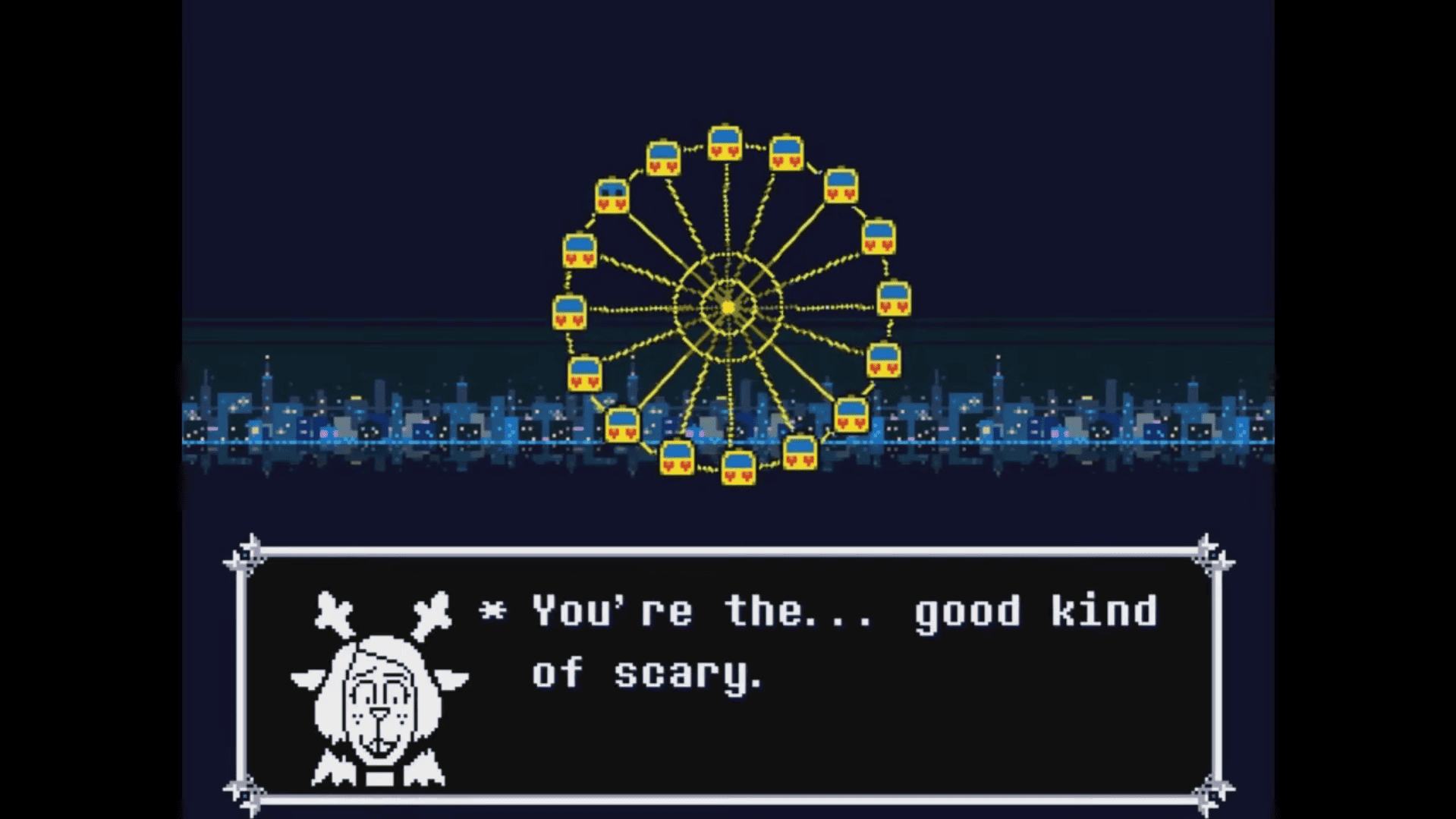
On the opposite end of the spectrum, so to speak, we have small indie titles that don’t have the same monetary obligations to appeal to as many people as possible and, thus, don’t care if they upset bigots with their incredible portrayals of impactful gay characters. There are plenty of indies that miss, sure, but the ones that hit have created some of the best LGBTQ+ reps in any media, at least for me.
First, perhaps the most prolific examples are Undertale and Deltarune. In Undertale, you’ve got Undyne and Alphys having a lesbian relationship front-and-center, a transgender side-story happening subtly and excellently, and additionally, you have whatever Mettaton is. Then, in Deltarune, you have the very clearly non-binary protagonist and a lesbian relationship forming between Noelle and Susie. These things are done so well that they’ve changed many people for the better.
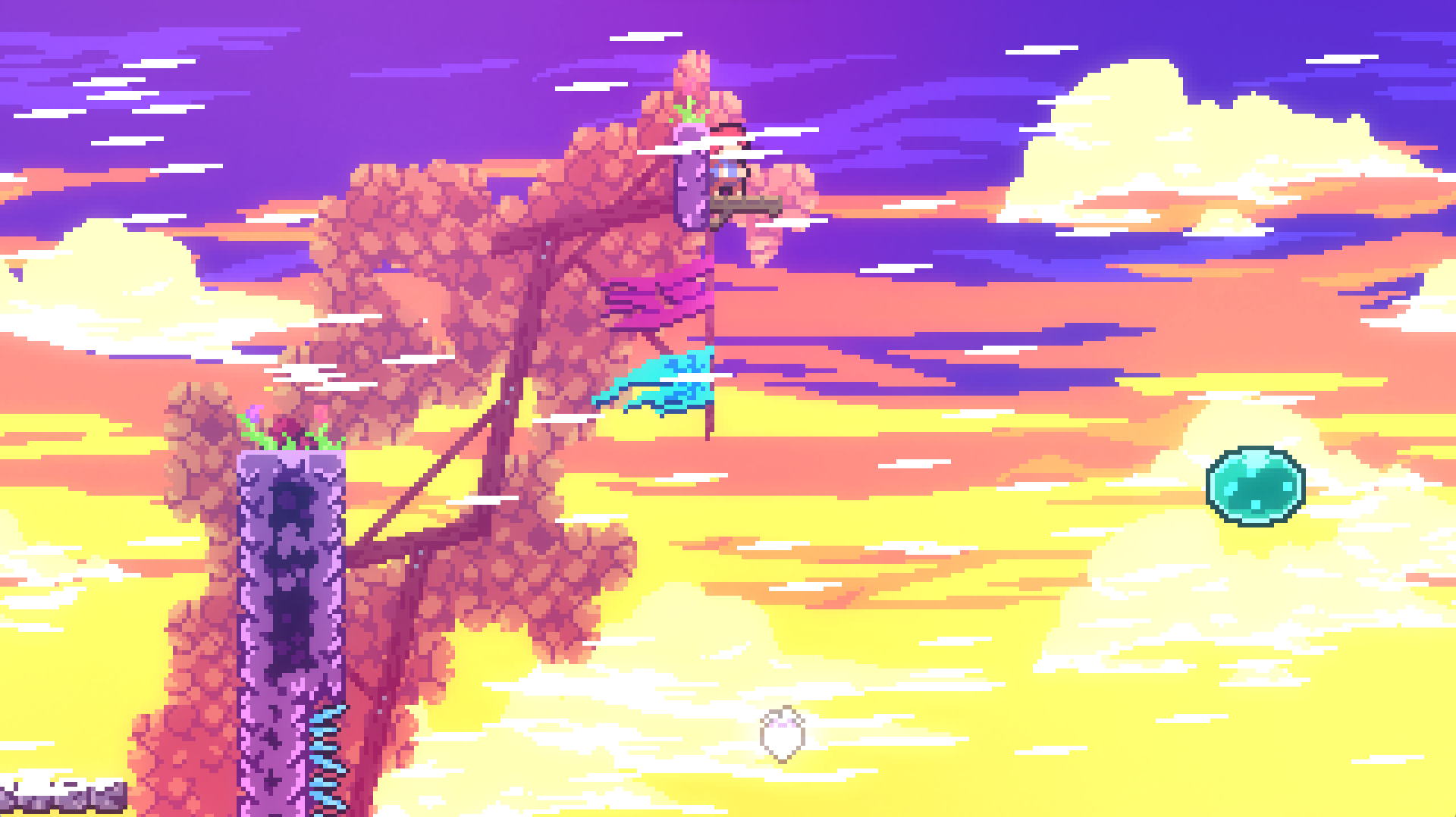
Then you have Celeste, one of the most prominent examples of a subtle, empowering, and beautiful transgender story. It shows Madeline going from complete self-doubt, anger issues, and anxiety to accepting the part of herself that she doesn’t like, with the creator, Maddy Thorson, confirming that this was an allegory for being trans, and it’s an incredible one that helped me climb my mental mountains.
Super Lesbian Animal RPG, as you might expect from a game with that title, throws subtlety out the window and goes for a game that is extremely gay while also using its queer characters as a platform for emotional storytelling, pretty great RPG gameplay,, and making something that is both a celebration of pride and a pretty good game even when divorced from that aspect.
Stardew Valley has every bachelor available as a romantic partner no matter what your gender is, with the dialogue for each character varying if you’re in a same-sex relationship with them, most of them having stories about you convincing them that they were even attracted to the same gender at all, and all of them being written in believable ways despite this just being better as a gameplay mechanic.

Slime Rancher chooses a gender-neutral name for the protagonist’s love interest that you get hints about throughout the entire game, with the ending revealing her to be a girl and having her sing a gorgeous song that ties the whole game up in a bow. While the reveal being “she’s gay, actually” sounds meh, showing an impactful and sweet long-distance relationship with the protagonist as the core story of the game makes it hit pretty hard and made my girlfriend cry when she played it.
Even when it’s not a big focus, there’s still plenty of great LGBTQ+ representation that serves to normalize the concept and make it feel like people like me are just natural parts of life that can be anywhere. Rivals of Aether has Mollo, a transmasculine character indicated by his antennae (for you moth anatomy nerds), OneShot’s protagonist is Niko, a nonbinary character that’s so well designed, I’ve seen people refer to them with every gender, and Terraria is removing gender entirely.
These subtle examples all integrate well into their stories. While they may not be as big of a focus as in other games, they help make queer people feel included by writing them in a natural way or just not caring about making things exclusively straight and cis, especially when it comes to sacrificing gameplay mechanics. Looking at you, Fire Emblem.
Why are Triple-A Games Bad at This, Specifically?

So we know that big corporations can make good LGBTQ+ characters in other media and that having great representation in video games is certainly possible, so how come Triple-A game devs get it wrong so consistently? To be clear, I don’t know for sure why, but I do have a few good guesses, most of them related to money because we live in a capitalist hellscape where art is not made for the pursuit of creativity but rather for the pursuit of wealth. Don’t worry; I’ll tone it down. Don’t want to go full Hammer and Sickle on you.
Likely the biggest reason why is that video games, more so than any other artistic medium, are damn expensive to make. An animated movie needs to hire animators, writers, creative directors, marketers, and a few different positions, but video games need all that on top of programmers, playtesters, and a whole heap of extras to ensure everything functions.
Big triple-A devs are afraid of taking significant risks because it’s a more significant investment to make video games than other mediums. They’ll often make games with an exciting concept to grab people or are sequels/remakes of existing games, then wait 2+ years and spend millions of dollars for the game to finish its (probably rushed) development.
Unfortunately, in the current political climate (especially in Asia, Africa, and South America), it’s a risk to add queer characters to games and an even more considerable risk to make them prominent. Disney takes on the calculated risk to make their movies sell even with these characters’ (minor) inclusion, but who’s to say, Sony, Microsoft, Naughty Dog, or Bethesda do?
Knowing that, it’s mildly more upsetting that the Triple-A’s that go for this kind of representation often fall flat and don’t do it right. If you ask me, it’s probably because they don’t bother hiring people who actually represent the role or consult with people who have firsthand experiences to make these stories feel realistic and impactful (my DMs are open, by the way).
Often, though, these games already wouldn’t have the broadest reach in the world, as they tend to be made for straight, white men (like everything else, am I right?), so they think of including LGBTQ+ characters because it opens up the audience to people who want to see themselves represented in these games. This decision of only making gay characters because you can market them to gay people makes pretty much everyone actively uncomfortable, but it is, unfortunately, very common.
Indie games, on the other hand, are already making games knowing that they aren’t going to reach a vast audience, so they’re typically made with the creator’s vision 100% intact. If they want to include heartwarming, lovely LGBTQ+ representation that’s written well and touches the soul, they can do that without fearing millions of dollars in losses.
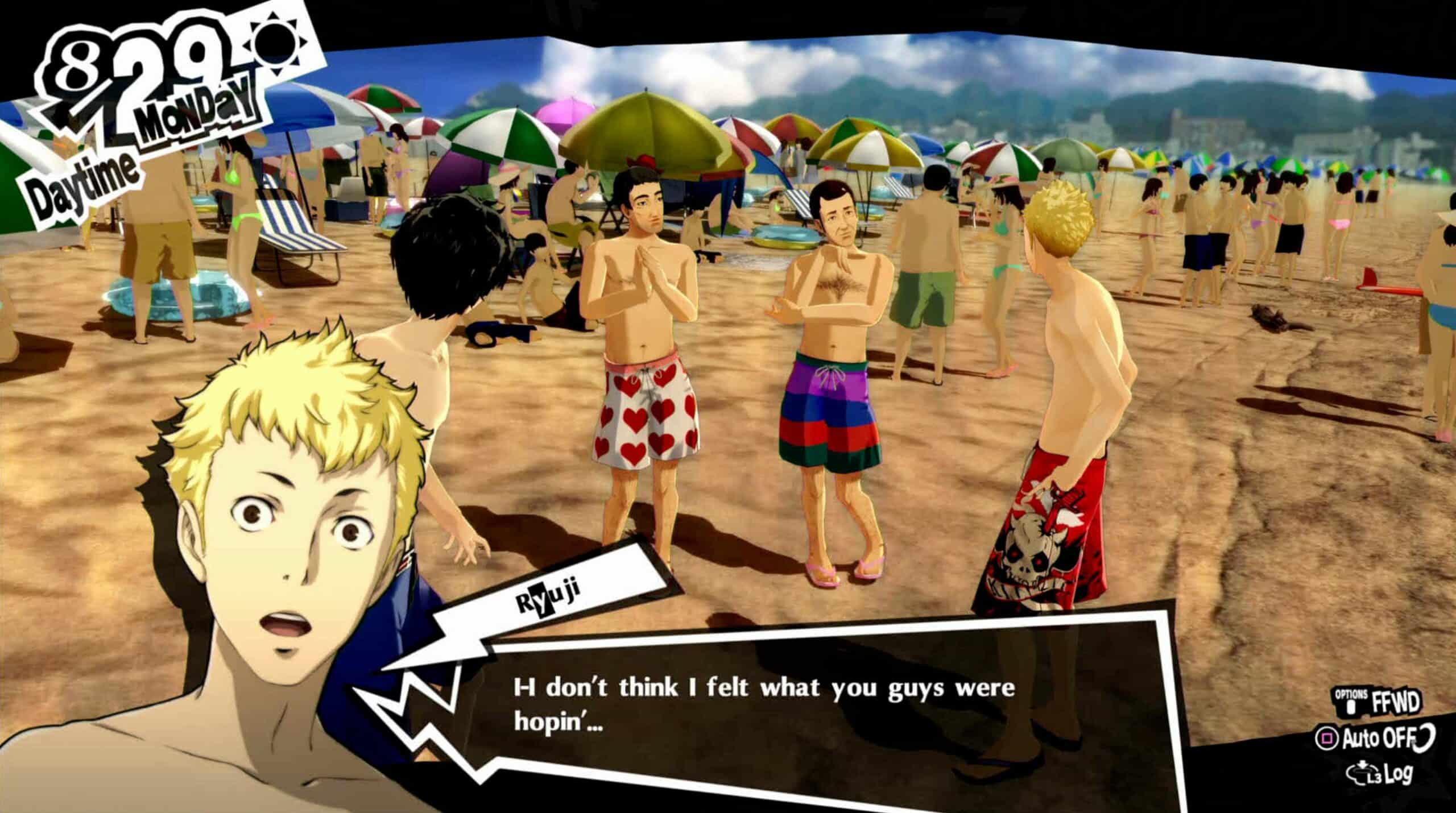
The final reason for this is the most obvious, which is bias. This is probably why Persona 5’s queer characters exist solely to be a joke, and it’s because the director of that game is known for being at least somewhat transphobic and homophobic, leading to that bigotry and hatred bleeding out into his games, with these characters being a stark example of that.
This bias isn’t only on the creator, though. If your audience is comprised nearly entirely of people who either don’t care about the representation or will actively boycott the game because of it, then it doesn’t matter what your personal biases are; it would just be a better move not to include it at all, since your fans won’t exactly be thrilled if you have a campaign all about being gay.
How Triple-A Games Can Get Better at Representation
Alright, so we know there’s a problem, so how do we fix it? To put it lightly, it’s not something that will be resolved within the next few years if I had to guess, mostly because consoles are getting more powerful, consumer expectations are getting higher, games are getting more expensive to make, and corporations are going to play it safer and safer because of it.
First and foremost, if a big studio wants to make a character trans, they should have a trans writer, or at the very least, consult real trans people with real experiences (again, my DMs are open). I’ve found pretty much any queer character written by anyone who isn’t aligned with the character they’re writing feels like a dishonest or straight-up lousy representation of the experience they would have. I always think that I could’ve done better.
Secondly, we’d be getting better representation if game studios made lower-budget games in which they could do more risky things. If money is an obstacle to getting good gay characters, then lower the budget and overall scope of the game, allowing you to increase time spent, giving those characters proper time and attention, and then everyone’s happy. Provided the game doesn’t suck, that is. Unfortunately, gaming is going the way of 10-year-long billion-dollar projects, but that’s another discussion.
Third and finally, Triple-A’s need to take inspiration from the indies that do it right. Look at what people love about Undertale, Celeste, and Slime Rancher. Hell, I’d even take something on the level of the subtle representation in Stardew Valley, Hollow Knight, Outer Wilds, Cassette Beasts, and OneShot. Even goddamn Among Us Does it Better.
Immerse yourself in the hauntingly beautiful world of "Hollow Knight," where every step unveils secrets and challenges waiting to be conquered. With its captivating art style and intricate gameplay, embark on an epic journey filled with mystery, danger, and discovery unlike any other.
In their current state, there are quite a few reasons why AAA games suck at representing the LGBTQ+ community; it’s mainly due to money being a massive obstacle, as well as the lack of passion and not getting the voices of minorities properly factored into these games, instead using them as a tool for marketing, or ignoring them entirely. Indies do it better.
Questions and Answers
Question: Why is LGBTQ+ representation in games so bad?
Answer: This is only a problem with Triple-A games. Indies have their fair share of excellent representation, but big-budget productions manage to drop the ball every time due to a financial incentive to play it safe and not make these characters very in-depth or exciting.
Question: What are the best indies for LGBTQ+ representation?
Answer: The best games for these characters, in my opinion, are Undertale/Deltarune, Celeste, and Super Lesbian Animal RPG.
Question: What is bad LGBTQ+ representation?
Answer: Representation is terrible when it either provides an unrealistic or poorly written interpretation of something or tosses these potentially exciting characters to the side in favor of safer, more marketable characters.
Conclusion
The issue of poorly done representation in triple-A games has been something that’s bothered me for a long time, and as is most matters in this industry, the reason it’s like this is because of money. As long as queer people are a minority that a significant amount of people hold hatred in their hearts for, it will be a risk for corporations to include well-done and meaningful representation in their media.
It’s both terrifyingly bleak and something that inspires hope in my heart to see the duality of AAA games representing me with either bland, uninteresting characters and indies giving me characters that I can lovingly identify with that have helped me, personally, on my own journey of self-discovery. Indies doing certain things better is nothing new, but this is the starkest example, where triple-A’s fumble every step of the way while indies make some of the best queer characters in fiction.
Embark on an unforgettable journey through the underground world of Undertale, where every choice you make shapes the fate of monsters and humans alike. With its charming retro graphics and innovative gameplay mechanics, immerse yourself in a tale of friendship, determination, and the power of mercy.
Continue reading:
Cozy Games Are Becoming A Problem
Indie Game Sub-genres Explained
- Penny’s Big Breakaway Review – A Swing and a Miss - February 27, 2024
- Ultros Review – Psychedelics with Substance - February 17, 2024
- Amazing Indie Games With Huge Campaigns - January 30, 2024

